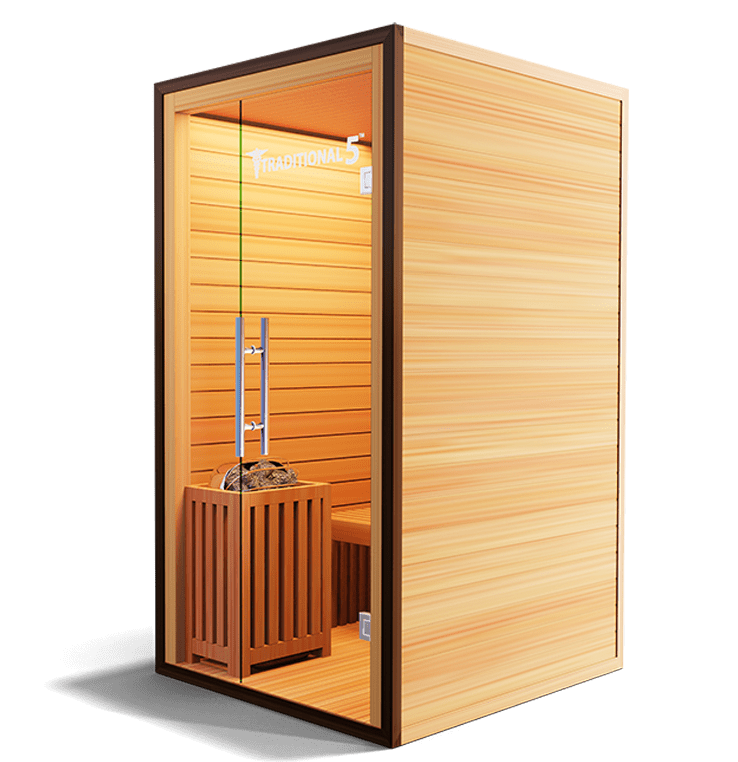The Only Guide to Traditional Sauna
The Only Guide to Traditional Sauna
Blog Article
The smart Trick of Traditional Sauna That Nobody is Discussing
Table of ContentsSome Known Details About Traditional Sauna Indicators on Traditional Sauna You Need To KnowTraditional Sauna Fundamentals ExplainedThe Definitive Guide to Traditional SaunaExcitement About Traditional Sauna
A lot of the weight lost in a sauna is water loss and is re-gained upon rehydrating. Without a doubt sauna can be an essential part of a healthy weight loss program. To check out the differences between conventional and IR saunas, I will separate these right into proven, academic, and made distinctions.Hence, the most popular factor in the saunawhich is at the ceiling directly above the sauna heateris typically between 185 and 190 F. Claims that a standard sauna surpasses 200 F is just not true and not relevant for electric saunas sold in the US. The temperature for a far-infrared sauna is normally established in between 120 and 140 F; nonetheless, unlike the traditional sauna, the objective in and IR area is not to attain a heat.
As a result of this, the temperature distinction is virtually unnecessary, given that profuse sweating leads to both sauna types, but the technique of heating the body is various. In an IR sauna the bather will certainly feel warm and will certainly sweat profusely, yet at a lot lower temperatures. Traditional Sauna. Therefore, if the goal is to invest longer durations of time in the sauna, the IR sauna is a good choice

Traditional Sauna Can Be Fun For Anyone

When the heat is accomplished, the aspects cycle on and off to keep the high temperature level. Traditional Sauna. Most traditional sauna users take pleasure in putting water over the rocks to develop vapor to increase sauna humidity levels. The benefits of pouring water over the rocks consist of: making the room much more comfortable, moistening the nasal passages, and allowing the use of aromatherapy by blending important oils with the water
In a far-infrared sauna, the warm waves pass through the body to successfully heat the body and raise the body core temperature level. To accomplish this increased temperature, Far-infrared emitters produce infrared energy which is close to the very same wavelength as that which the body naturally emitsoften referred to as the "Vital Variety" of 7 to 14 microns), so the energy is well received by the body.
When the energy enters the body, it causes the body temperature to increase and inevitably leads to sweating. In an infrared sauna it is necessary for the emitters/heaters to continue to be on almost regularly. Because there is no mass of rocks to preserve warmth, the sauna will cool if the emitters shut down.
9 Simple Techniques For Traditional Sauna
As mentioned above, the sauna bather in an infrared room wants to position himself before operating emitters to get optimal take advantage of the heat. The home heating time for both areas can be very various, relying on exactly how the rooms are utilized. For a traditional sauna, a bather should permit 30-40 minutes for the room to accomplish a desired temperature and to properly pre-heat the rocks.
A well built sauna will typically achieve a temperature level of look at this web-site 150-160 F in concerning 30-40 minutes. For hotter temperatures, the space may need to warm for a longer duration.

Standard saunas tend to be bigger (hence use even more electrical energy) than infrared saunas, although traditional saunas are certainly available in one and two individual sizes. here are the findings For a two-person traditional sauna, 5x6 or 5x7 size is most preferred. The leading bench can comfortably seat two or three individuals and is also enough time to rest throughout the sauna session.
The Of Traditional Sauna
The ordinary price per kWH of electrical energy in the U.S. is about $0.11 - Traditional Sauna, so a 4.5 kW heating unit will set you back roughly $.50 to run for one hour, if the heater runs continually for one hour. Usually a sauna heater will run for 75% of the first hour and 50% of succeeding hours on given that the elements cycle once the established temperature level is accomplished
A two individual far-infrared area is normally physically smaller than a conventional sauna, often about 4' x 4' or smaller. The IR heating system is commonly 1.5-1.7 kW making use of a 120 volt 15 amp plug-in solution. Given that the area can be made use of sooner than a sauna area, we will assume the area is utilized for to of an hour including heat up time.
There is a seldom reviewed distinction in the social experience between the two areas. While our society has shed a few of the social advantage of the standard sauna experience, it can be very socially fulfilling. From family members time in the sauna, to heart-felt discussions with better halves, click to read more to sauna partiesthe standard sauna experience can bring about intimate mingling.
All about Traditional Sauna
Many higher end infrared areas consist of colored light therapy, noise systems and full-glass fronts.
Report this page